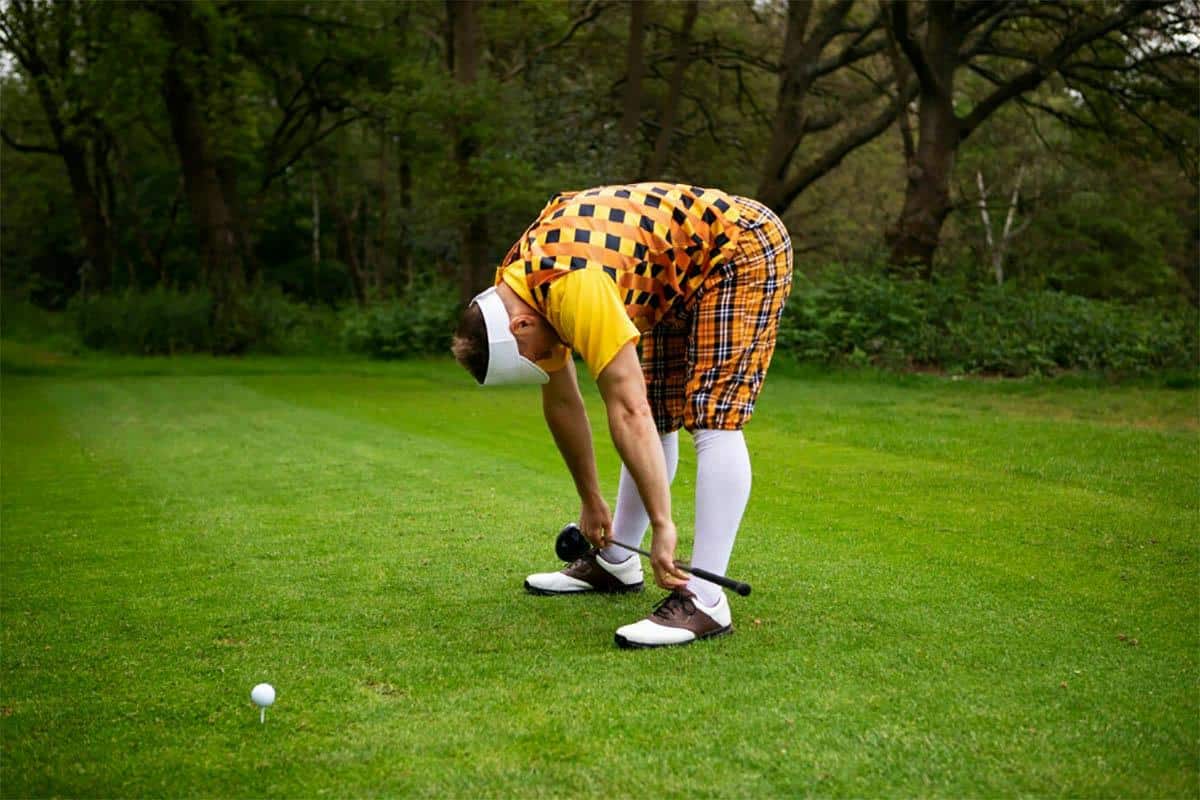Introduction
Achieving the perfect swing in golf requires precision and finesse, with each part of your body playing a crucial role. One area that often faces challenges among golfers is the hips. Hip pain from golf can be a common complaint, affecting both amateur enthusiasts and professional players.
In this blog, we will explore the various aspects of golf-related hip pain, its causes, symptoms, diagnosis, treatment, and prevention. Additionally, we’ll consider the impact of hip health on overall golf performance.
What Role Do Hips Play in Golf?
The hips are pivotal in executing a powerful and efficient golf swing. They facilitate the rotation of the torso, which is essential for generating the force needed to propel the ball down the fairway. The weight transfer from one hip to the other is a fundamental element of the golf swing, making hip mobility and strength critical for success on the golf course.
What Causes Golf Hip Pain?
19.3% of male pro golfers experienced hip pain, shedding light on the prevalence of golf injuries. Understanding the specific factors contributing to golf hip pain is crucial for effective prevention and treatment. Several key elements can lead to discomfort in the hip region for golfers.
Swing Mechanics
Poor swing mechanics, such as over-rotation or improper weight transfer, can stress the hips excessively. Addressing and refining your swing technique with the guidance of a golf professional can help mitigate these issues.
Muscle Imbalances
Golfers often use certain muscle groups more than others during their swing, contributing to uneven strength and flexibility. A targeted exercise routine focusing on strengthening and stretching specific hip muscles can help address these imbalances.
Overuse and Repetitive Motion
The hip joints and surrounding muscles may become strained from the repeated motions, resulting in pain. Incorporating adequate rest days into your golf routine can allow for proper recovery.
Age and Wear and Tear
Conditions such as arthritis may develop with age, causing pain and stiffness. While age-related factors may be inevitable, adopting a proactive approach to hip health through regular exercise and proper warm-up can help manage these effects.
Inadequate Warm-up
Failing to warm up adequately before a round of golf can increase the risk of hip injuries. Incorporating dynamic stretches and light exercises into your pre-game routine can significantly reduce the likelihood of hip pain.
Common Symptoms

Recognizing the signs of golf hip pain is essential for early intervention and effective treatment. If you experience any of the following symptoms, it’s crucial to address them promptly:
Pain during or after the swing: Persistent discomfort in the hip region during or after playing golf.
Limited range of motion: Difficulty moving the hip joint through its full range of motion.
Stiffness: Feeling of tightness or stiffness in the hip area.
Weakness: Loss of strength in the hip muscles.
Diagnosis of Golf Hip Pain
Accurately diagnosing golf-related hip pain involves a triad of essential components:
Thorough Examination
Healthcare professionals conduct a comprehensive assessment, evaluating factors such as range of motion, joint stability, and signs of inflammation or tenderness.
Imaging Studies
Utilizing X-rays or MRI scans, professionals gain insights into the internal structures of the hip joint, identifying bone-related issues and providing detailed images of soft tissues.
Functional Assessment
Incorporating a hands-on physical assessment, healthcare professionals evaluate muscle strength, flexibility, and joint function, addressing both structural concerns and functional aspects contributing to hip pain.
How to Treat Hip Pain from Golf?
Treatment for pain in golfers related to hip pain varies depending on the severity and cause, offering various treatment options. It may include:
Rest and Ice: Take a break for recovery. If your golf swing is causing hip pain, it’s recommended to give yourself some rest. Give the affected hip time to heal, and apply ice to reduce inflammation.
Physical Therapy: Targeted exercises to improve strength, flexibility, and stability are essential for both amateur golfers and professional golfers.
Medication: Conservative treatment options for various forms of pain in golfers may include pain relievers or anti-inflammatory drugs.
Modification of Swing Mechanics: Fine-tuning golf swing mechanics by working with a golf pro can be instrumental in addressing hip pain.
Tips to Prevent Hip Pain from Golf?
Preserving hip health is essential for an enjoyable and sustainable golfing experience. Consider these proactive measures to prevent hip pain:
Proper Warm-up
Always dedicate time to a thorough warm-up routine before hitting the golf course. Dynamic stretches and light exercises prepare your hips for the demands of the swing.
Stretching Routine
Integrate hip-specific stretches into your pre-game regimen. Focus on improving flexibility in the hip muscles to enhance your range of motion.
Strength Training
Incorporate targeted strength exercises for the muscles around the hips. This not only provides better support during the swing but also helps prevent imbalances that can lead to pain.
Regular Practice
Consistent practice sharpens your golf skills and conditions your muscles, reducing the risk of overuse injuries. However, balance is critical; listen to your body to avoid excessive strain.
Equipment Check
Ensure your golf equipment promotes proper body alignment, including shoes and club fit. Ill-fitting gear can contribute to poor posture and mechanics, increasing the likelihood of hip discomfort.
What Can a Physical Therapist Help for Golf Hip Pain?

Physical therapists play a crucial role in addressing and preventing golf-related hip pain. Through personalized exercise programs, they target weaknesses, improve flexibility, and enhance overall hip function. This specialized physical therapy treatment not only aids in rehabilitation but also proactively prevents future issues.
Additionally, therapists offer guidance on proper body mechanics during the golf swing, contributing to a sustainable and pain-free golfing experience. Schedule a call with The Royal Treatment for top-notch physical therapy. Elevate your golf game today!
Conclusions
While golf hip pain is a common challenge, it’s not insurmountable. Understanding the role of the hips in the golf swing, recognizing symptoms, and taking proactive steps for prevention and treatment can contribute to a more enjoyable and pain-free golfing experience.
FAQs
Q1: What Helps Hip Pain in Golf?
A1: Rest, ice, physical therapy, and swing modifications effectively relieve hip pain from golf. Additionally, a study found that hip replacement surgery significantly improved the golfing experience for both regular and competitive players.
Q2: Can Golf Cause Hip Tendonitis?
A2: Yes, the repetitive nature of the golf swing can increase the injury risk for hip tendonitis, impacting the hip flexors and the bone joint, causing inflammation and pain in these tendons.
Q3: What Are the Signs of a Damaged Hip?
A3: If you notice persistent pain, limited motion, stiffness, weakness, or muscle strain, especially during external rotation of your hip, you might be dealing with hip impingement, potentially leading to right hip pain during your golf swing. Conversely, left hip pain from your golf swing may also be an indication. Seeking guidance from a healthcare professional for proper evaluation is crucial in such cases.
